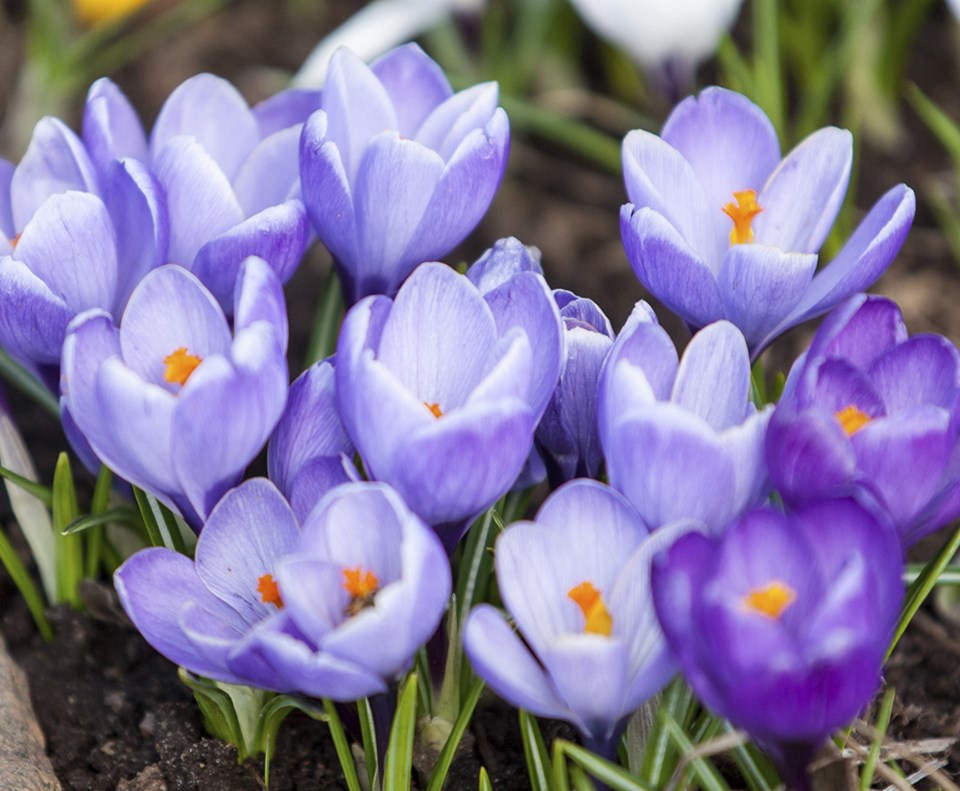The first few flowers that spring up through melting snow can bring us as much pleasure as June with all its roses. The nights may still be icy, but those early flowers tell us gentler weather is almost here.
Traditionally snowdrops are the earliest and, like almost all winter flowers, last for many weeks outside. The Giant Snowdrop (Galanthus elwesii) is usually the first to bloom, closely followed by the small Common Snowdrop (Galanthus nivalis) with the double snowdrop bringing up the rear.
All establish best when transplanted after flowering while still in leaf. When happy in semi shade with seasonal rain available, single snowdrops expand from seed and from offsets. If you start with snowdrops by buying dry bulbs, planting in very early fall is best. Some gardeners say a few hours soaking triggers faster growth.
The Giant Snowdrop can handle a sunny spot better than the others. Once snowdrops go dormant, drought is no problem nor are high summer temperatures.
Like some other bulbs, snowdrops produce droppers. These are nature’s survival plan: a deep-down bulb connected to an upper bulb by a tough vertical root. If the upper bulb dies the lower bulb replaces the plant. Once I came across a dropper string of three Galanthus nivalis bulbs.
The Snow Crocuses got their name from their tendency to pop up through snow. One of the earliest is the golden Crocus anacyrensis, but Crocus chrysanthus and its selections such as Blue Pearl and Cream Beauty aren’t far behind. All are very small, but when left alone can grow into huge drifts.
Unfortunately they’re seldom left alone because they’re a favourite squirrel munchie. But it’s still possible to have a lawn carpeted with crocus flowers if you choose Crocus tomasinianus.
Selections include the assertively purple Ruby Giant, the gentler Barr’s Purple and the pale purple, grey-backed species. All are absolutely squirrel-proof. This crocus is frankly invasive, but it’s delightful to find crocus blooms in unexpected places when almost nothing else is flowering. The bulbs are tiny and have inconspicuous leaves.
Then there’s the January-flowering hardy Cyclamen coum. Flowers are delicately pink or white, and when it’s happy, it colonizes lawns. The low-growing, patterned leaves emerge in early fall and remain until May when it goes dormant. Drought and heavy lawnmowers don’t bother it. But good drainage is important, which may be why it’s very happy under cedars.
Usually Iris reticulata puts up flowers by mid-February. It’s a very dwarf iris that likes the brighter light at the edge of borders. Some are very fragrant, such as the purple-maroon coloured George. Most flowers are purple or bluish, but Cantab is pale blue, and Katherine Hodgson has bluish white petals with speckles and fine lines of a deeper blue.
Another dwarf, early-flowerer is the bright yellow Iris danfordiae. It’s popular in some quarters for its brightness, early bloom and strong fragrance. Unfortunately the bulbs split up after flowering just as some tulips do.
With tulips deep planting does help perennialize some and so does keeping them absolutely dry in summer. It might be interesting to dig up Iris danfordiae bulbs shortly after flowering, store them dry inside and replant in fall.
Anne Marrison is happy to answer garden questions. Send them to her via [email protected]. It helps if you can add the name of your city or region.



